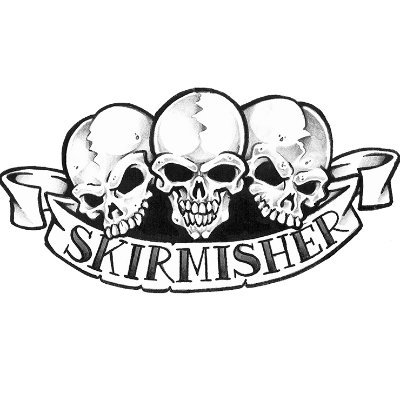Tag Archives: Gaming
Obsidian Portal Campaign of the Month November 2023: Violet Hill
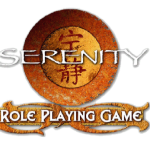
Saddle up, Browncoats, and take a gander at the goods in this November’s Campaign of the Month — Violet Hill, by Jonathonathon. It’s a veritable ‘Verse of slick design, custom rule-mechanics, and unique Firefly/Serenity storylines developed over many iterations by a husband-and-wife team and it’s just plumb pretty. Fire it up and let’s get this bird in the air!

Salutations, Jonathonathon and congratulations to you and your gaming group on winning Campaign of the Month! Please tell us a little about yourself, how you found your way into roleplaying games, and how your group found each other?
Thank you! I’m really excited you guys took notice of the campaign and selected me! Sorry the site isn’t mobile friendly, my most recent ones will be through!
A little about me: I’m Jonathon and when I’m not scribbling game notes I work my day job as an eCommerce manager. I’m an omnichannel digital marketer but mostly specialize in analytics. I found my way into tabletop games in college when I worked at a grocery store. While I was working a register for my shift, my coworker pulled out a Players Handbook for D&D 3.0 and I started asking questions. Eventually she invited me to a game and that was my first experience with a ttrpg.
My current (and only) PC is my wife, and we actually met because of gaming. I ran into her then-boyfriend on our college campus one day when I was late to class and we chatted for a few minutes. He briefly mentioned a game he was running and asked if I was interested, so I showed up and joined his group where we met. It was a BESM game set in the Outlaw Star universe.
I used to have a pretty regular group for a while but we all grew apart, so mostly I just run games for my wife now. We try to get in a session on weekends when we can scrape together a few hours. Unfortunately it’s tough to bring in more people with an inconsistent schedule and heavily homebrewed mechanics.
Your campaign, “Violet Hill” is set in the universe of the Firefly TV series, using the Serenity RPG mechanics. Could you give us a few, brief highlights for those unfamiliar with the setting and game system?
Sure. We use the old Cortex system, not the most recent and probably more widely known Cortex Prime. The system uses a die rating of d2 through d12 and every trait in the game can be measured on that scale (with the exception of Assets until an alternate version of the system was released in a later publication called Big Damn Heroes). What we love about Cortex is the plot point system. It rewards players for cool descriptions and ideas, and in turn they can use those plot points for things like minor story edits. I like the system because it actively encourages players to be more involved in the game. After you get to know the system, it’s also crazy easy to write and stat for.
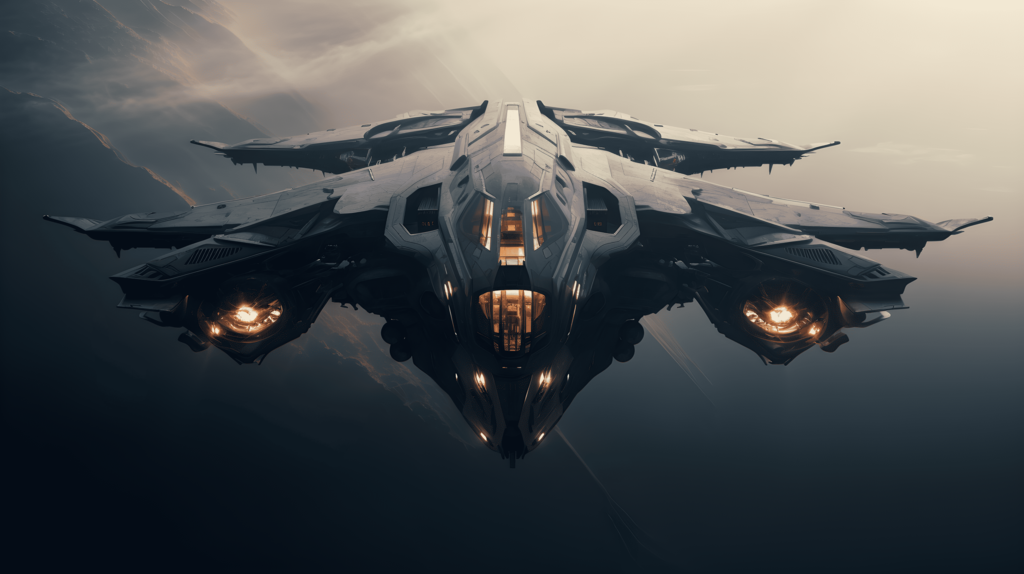
What’s the story of “Violet Hill,” so far?
We’ve run this campaign around half a dozen times now, so there’s quite a bit. We first played a pretty traditional Serenity game but I really like running high powered fantasy games. So I started working on a rule set to bring a high fantasy vibe into the world. Thus the “Red” game was born. It was the idea that the Alliance had released a compound which caused people to develop unique powers. The “Red” game ran through a few iterations of mostly super-hero-esque Serenity fun but my wife and I continued developing the story and iterating on the concept.
Eventually every color of the rainbow became its own mutation with unique attributes and the story of “Red” continued to evolve. My wife and I used to trade off running games and we would build on the cannon that we wrote with each successive game. Where we wound up with it is that Red is a fraction of the genetic material of an advanced alien race that the Alliance is trying to understand and control. The alien race that are the progenitors of the mutation have incredibly advanced abilities and technology but their motives have changed from campaign to campaign. At first they were just explorers that happened to accidentally get captured and experimented on.
In our most recent campaign, they’re a pacifist race being attacked by another conquering alien race but have embraced pacifism so completely and for so long they’ve long since lost the ability to defend themselves. Most of the race believe that if they can’t escape the alien invaders they should resign themselves to their fate, but a splinter faction searched the universe for an answer and found humanity. As we all know, humans have a long history of gruesome experience in war and were ideal candidates to fight back. So this small sprinter faction began implanting a small part of their genetic material to mutate humans in the hopes that they could rally an army just powerful enough to save their species. The campaign tells the story of the humans that have been drafted, their quest to overthrow the Alliance to unite humanity, and return to the home galaxy of their alien benefactors using their advanced technology to fight back the invaders.
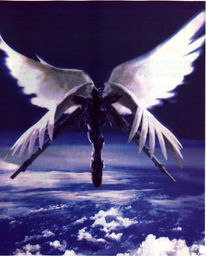
The alien mutations mechanics described in “Violet Hill’s” wiki are very intriguing. Where did this idea come from and how has it played out, in-game?
Just the desire to bring a superhero/gritty fantasy element into the Serenity universe, although we began exploring the powers further with each campaign iteration. Early on the mutants were identifiable by their eye color which changed when they were exposed. It was a quick and easy photoshop effect we could apply to customize character pictures a little and give PCs bonus XP for. We took to just calling them by their color after that. Reds were superhero lights at first, then we developed different stages of mutations with more powers. After the Red campaigns we moved on to the color Violet. These mutants had higher highs than the Reds but more complications. A big part of their abilities were naturally forming hive-like structures which lent itself well to the crew-style game Serenity was based on. We also wrote custom assets to support this mechanic, further building on the system we’d already established.
The rules have lent themselves to some truly epic moments in game: saving a colony on the Rim that’s out of water by drawing it from nothing, growing biomechanical ships with technological capabilities far beyond what humanity has achieved, growing an additional organ off the brainstem to control an entire army of mutants directly, boarding ships by “jumping” onto them in the middle of intense space battles, and much more. It’s definitely a different tone and feel than the show but there’s still plenty of six shooters and swearing in mandarin to go around.
Your Obsidian Portal profile shows that you have been on the platform for quite a while and have experience with a wide variety of games. If you had to narrow it down, what would be some of your favorites and why?
Yeah I’ve been on OP for over 13 years now. OP was exactly what I was looking for since my games were moving from paper to the digital space unavoidably. At first I was a little resistant because I loved the pen and paper aspect of the hobby but practicality finally won out. OP is just such a convenient way to communicate with players and compile everything all in one place.
I love to try a little of everything, but I have a few stand-out campaigns that I really enjoyed and was inspired to run. I ran a Changeling: the Lost game about a girl who inherited a Goblin Market Stall from her grandmother and began acquiring supernatural powers through deals but was otherwise completely human. One of my wife’s favorite games was “Corporate Woman” which was run in Chronicles of Darkness, where she was a human that could wear supernatural templates like suits and used them to infiltrate different supernatural societies at the behest of a mysterious corporation run by an impossibly powerful administration. I’ve run a BESM game based on one of my favorite anime series, Soul Eater, which focused on a DWMA Meister and her journey through the academy. Adjacent to the Serenity system, I’ve run a Supernatural game where the players were supernatural creatures hunting other creatures that plays pretty similarly to Violet Hill. There’s quite a few, I like to bounce around a lot.
As for what’s next, I’m usually working on a few campaign ideas at any given time, but right now I’m writing a Pokemon Noir-style game inspired by the webcomic “Viridian City” (borrowing that name for the campaign) using the PTU system.

Do you or your players have any memorable moments, crazy twists, or favorite, Firefly-style quotes that were highlights during the campaign?
One of our campaigns involved a mercenary Captain with “Cold as the Black” but my wife, playing an Alliance-hating Rim folk girl, was set on bringing him out of his shell. They grew close over a dozen or so games until at one point they were planet side and her character was approached by a perfect duplicate of the Captain. The two of them merged back together (one of his abilities was that he could duplicate himself and never told her) because the original him was an Alliance Operative running interference for his clone and its crew. He had technically never met her before, but merging with his duplicate transferred all his memories and the Operative was pretty stunned by their relationship. She was pretty mad and it took a few sessions for her to forgive him, but they worked through it.
“Violet Hill” as well as some of your other campaigns, feature an innovative navigation interface with graphics that really help sell the themes and moods, as well as drawing attention to the information on which you want your players to focus. How did you create that layout and has it helped engage your players when they use the campaign site?
Wow thank you, that’s nice of you to say. I’ve got a pretty regular block of code I use to adjust the layout of the campaign then go into color schemas and particulars from there. I’m not all that great at coding and particularly terrible at anything art related, but I’ve been working a lot with MidJourney lately to create assets for my campaigns. It’s an amazing tool for GMs, I can’t tell you guys how much time I’ve saved from not having to comb through pictures for my games trying to find just the right one. It’s really streamlining how long it takes me to prepare. Viridian City is the first time I’ve incorporated layouts from MJ as well as assets to build a campaign, but it’s still very much a work in progress. Historically everyone that is in my campaigns is on desktop so that’s all I wrote code for but this time around I’m trying to make things more mobile friendly.

The setting lends itself well to just about anything — exploration, politics, ground combat, space combat, intrigue, heists, stealth missions, and good old-fashioned misbehavin’. What’s your favorite and what do your players like best?
My wife is all about relationships in games and lives for a great romance and getting to know the NPCs. I’m all about tactical encounters and creative problem solving. Our campaigns usually meet somewhere in the middle. Quippy dialogue and outrageous plans are also frequent additions, as the complication “Overconfident” is often responsible for a ton of plot points changing hands.
Obsidian Portal loves to hear the wisdom of winning GM’s. Do you have any tips or advice for writing stories, running games, building worlds, tweaking mechanics, or keeping the fun going that you’d like to share?
Find a way to make every game special. Most GMs I’ve met do that through story but I advocate for doing it in mechanics as well. When I run D&D games, I borrow a tradition from a friend of mine where he gives every player a wish to really customize their characters. It ensures each character is truly unique and something that no one has ever played before which we all loved. We evolved that into an “Ultra Point” system which allows players to buy up additional class features to really play a truly unique character by exponentially compounding character options. It’s also a great tool to round out a party for smaller groups as players started to drop off.
As you can probably tell from Violet Hill, I love to write custom mechanics to ramp up the campaign and then challenge myself to balance the game around them. I’ve known a lot of GMs that were staunchly against giving their players power and never understood why. I’d encourage GMs to let things get crazy from time to time. The more creative power you give your players, the more interesting solutions they’ll devise. The mechanics all come down to equations and probability, so it’s easy to let your players feel really powerful and still present a balanced (or challenging, or easy, or whatever you want) campaign to the table because everything else is under your control.
Lastly, and I know it’s probably been said to death but, one of my rules to live by is to play your way. It’s really discouraging to go to places like Reddit and other forums where “purists” believe games have to be played a certain way. If you have a great idea for a game you should go for it, and surround yourself with influences and people that inspire instead of criticize. Even if that’s not your cup of tea, when you read something from someone reaching out for inspiration to go a different direction than you would, be supportive instead of dismissive. What matters more than anything else is nurturing our passion for this hobby we all love.
Thank you for choosing Violet Hill as CotM for November!

Wellsir, it’s a mite late and the ol’ brainpan’s full of new know-how. So let’s call it a night with thanks to Jonathonathon on a bang-up job. Obsidian Portal is always looking for new nominations for Campaign of the Month, and you can submit your favorites here.
Also, keep an eye out for news on our Campaign of the Year competition, which is happening soon!
Obsidian Portal Campaign of the Month September 2023: Arcanearth
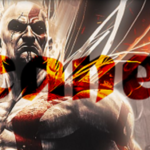
Do you enjoy Dark Fantasy? You will love this month’s CotM- Arcanearth! Great evil and selfless good, Magic, Angels and Fallen Angels. Religions play a big part of the world as well! This D&D 5E game has seen epic battles against ancient Dragons, Overlords, and giant frogs! The world itself has seen Ages of Angels, Dragons, Magic, Ice, and Rebirth! Come explore this rich world created by Omegabase and crew!
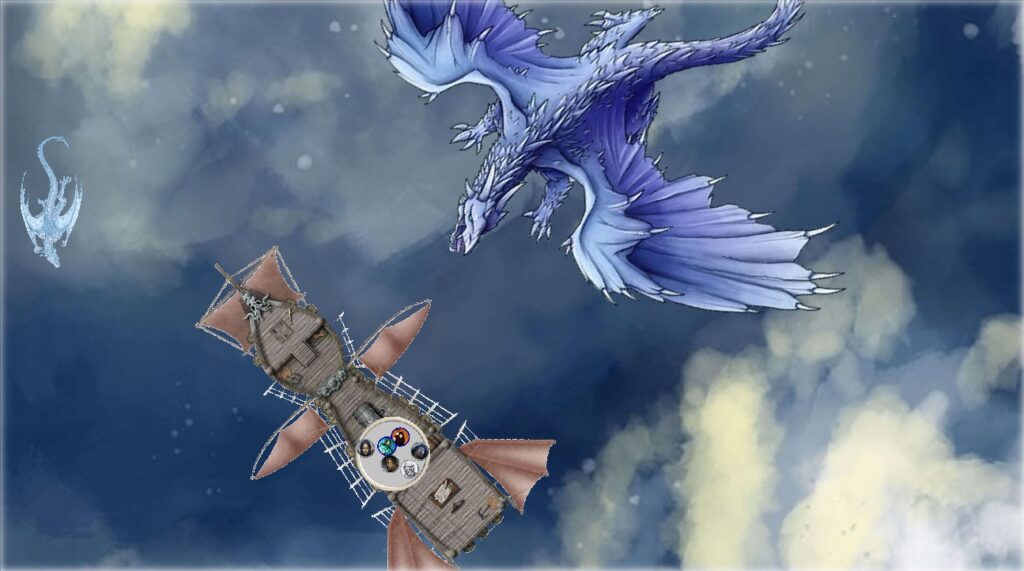
1. Tell us about the person behind the GM screen. Where are you from? Where can we stalk you on the internet? What do you do aside from gaming?
Not much of a social media presence beyond OP. Live and work out of Austin texas. Father of 2 earning a living from IT consulting.
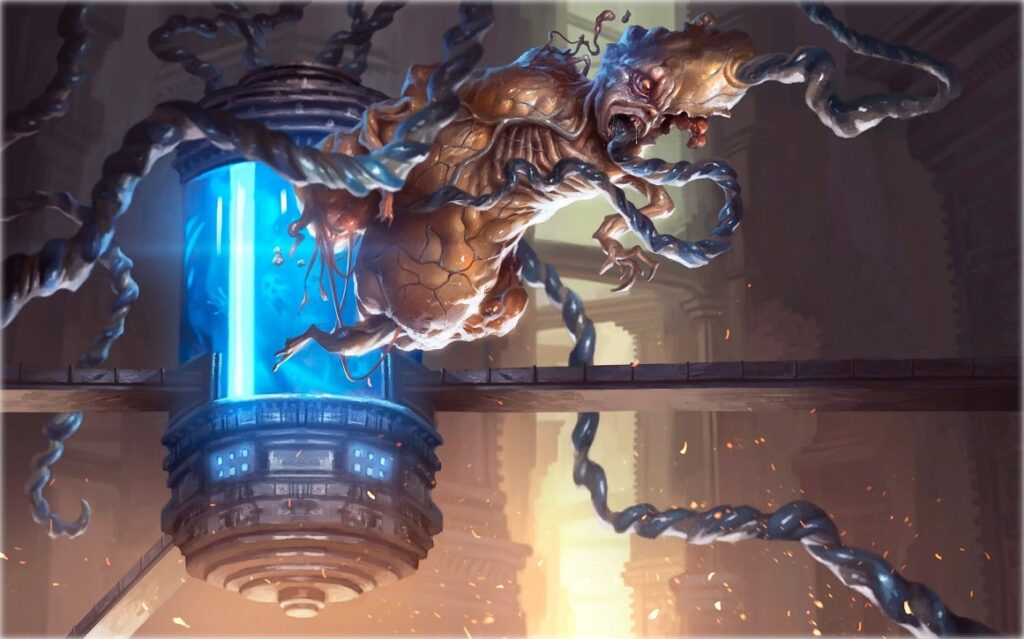
2. You made your home page your main artery to get information on your campaign- Why did you pick that approach? It is quite unique.
Didn’t see the need for another menu, convenient to have most info one click away.

3. You run D&D 5E- What do you like about it? Are there any things you dislike about it?
In most ways it’s the best edition of d&d. I did tone down the ‘easy mode’ aspect by eliminating hit dice for healing on short rests, limited healing on long rests, and allowing only one death save. This certainly contributed to the only 2 pc fatalities. Probably would use a different system next time around, like PF2, or integrate rules from other systems, like PF2. Also might consider an OSR system like the forthcoming Shadowdark.
4. You added Rogue Modrons as a race- what do you like about them, and how important are they to your campaign?
This came about from a short mini campaign where the players took a break from their main characters and assumed the personas of favorite henchman. These sessions don’t appear as separate logs but are mentioned in session 74 when one of the henchmen, who subsequently became a PC for a new player, revisited a key location from the mini campaign.
The player of Hoxton chose a modron he liberated from the plane of mechanus in session 63. Rogue modron seemed the obvious choice as this player has a thing for bots…played the robot Strelok in the last half of the gamma world campaign.
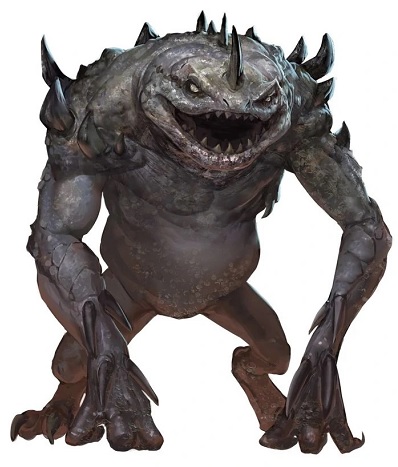
5. You have a very detailed world origin story, as well as a focus on angels and religion, for your game. How important are these to your characters?
Settings as such generally don’t have much utility to players and that holds true here as well. However the setting is indispensable to integrating the pc’s into the world events and related adventures when running an epic scale world-shaking superhero campaign such as this one. Ultimately the players will appreciate being part of a living world and adventures thereof.
6. How regularly do you play?
On hiatus currently, 2-3 sessions monthly when playing. Sessions average 3-4 hours in length.
7. How long has your group played together? How long have you been running Arcanearth?
Most of this group has played together since the 80’s. Most also played the last 50 or so sessions of gamma world 2754. Arcanearth started dec 2017. One player has the distinction of appearing in almost the entirety of both gw2754 and arcanearth (Grek/Strelok/Finch/Hoxton).
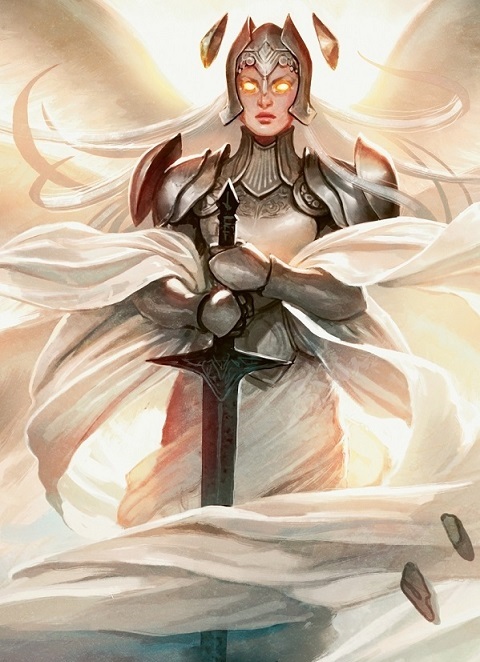
8. You won CotM all the way back in 2016 for Gamma World 2754- what keeps you coming back to Obsidian Portal?
Familiarity and lack of any worthwhile alternative. It’s a great place to organize and document your rpg campaign. A friend is starting a shadowrun 4e game soon, maybe we’ll throw that up on OP as well.
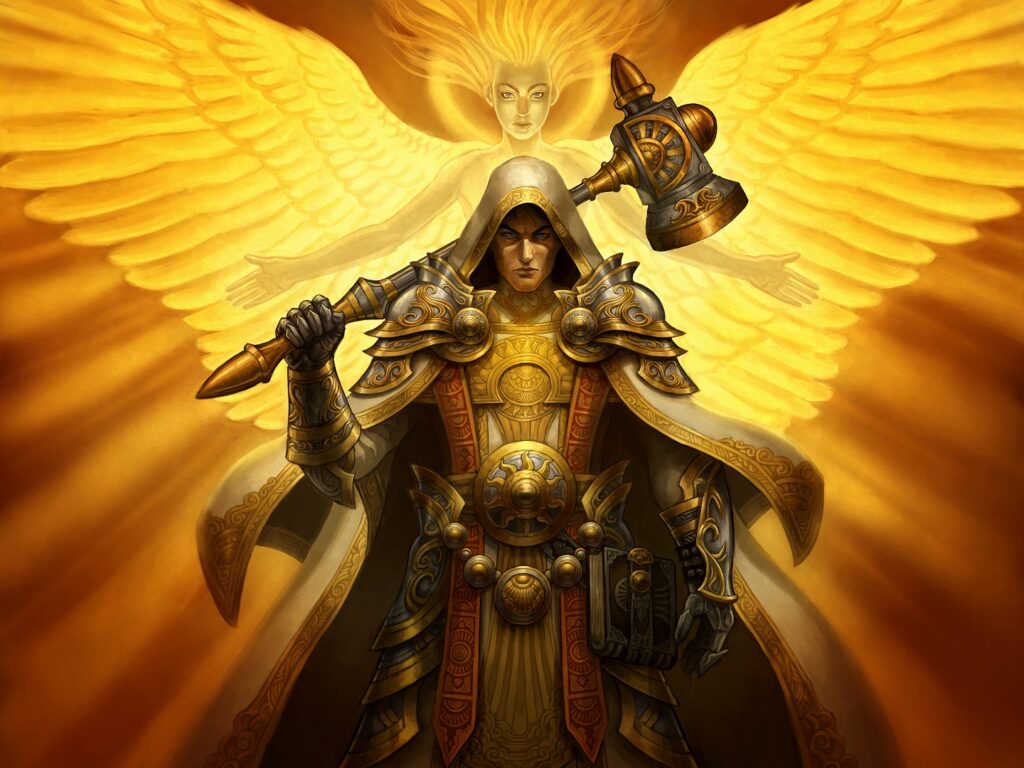
9. If you had to pick just one thing, what would you say Obsidian Portal helps you with the most? Do your players get involved on the wiki too?
PCs use OP for character sheets and backstories. The searchable database helps a lot for finding old npcs and events from past sessions. The character pages are the single most useful feature for both players and GMs.
10. Where do you draw inspiration from when preparing your game?
This setting is from fall from heaven 2, a total conversion mod for civilization 4. The epic scope of the macro game is inspired by the FFH2 setting and the fantasy works of Michael Moorcock. On the micro scale, you may discern the influence of Jack Vance. See the sessions about a certain ‘Green Pearl’.
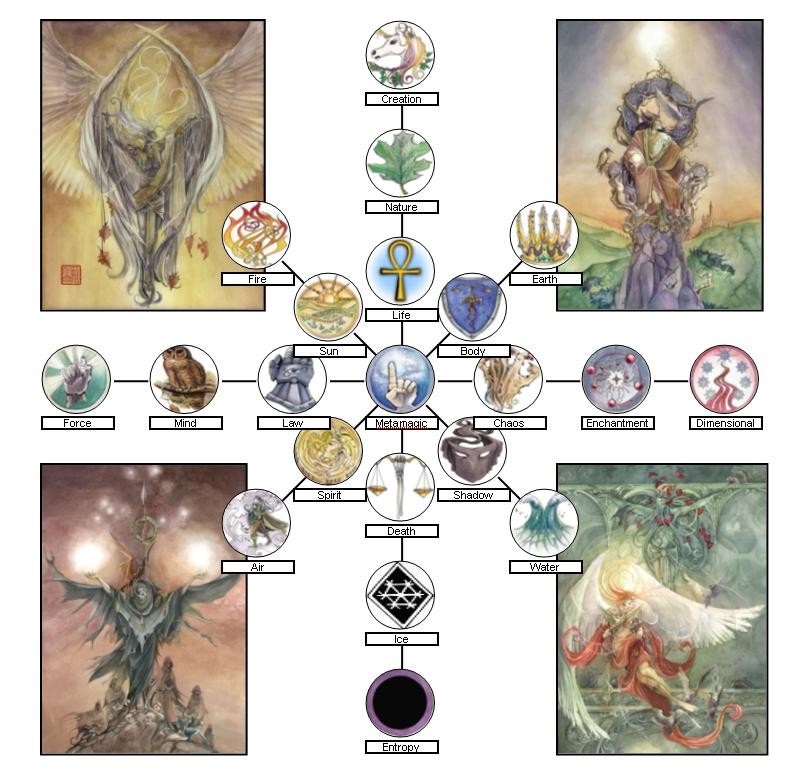
11. How much time do you usually take to prepare for a session?
On average across all sessions, not counting the original world wiki creation, probably as much time to prepare as to play (3.5 hours). The wiki and world building, hundreds of hours over the course of years.
12. What would you say has been the best moment your table has had thus far in your game?
For me, the green pearl sequence. For the pcs, possibly the waking of the sleeping god Danalin and defeat of the Overlords, or more recently, the close battle with the ancient red dragon Acheron.
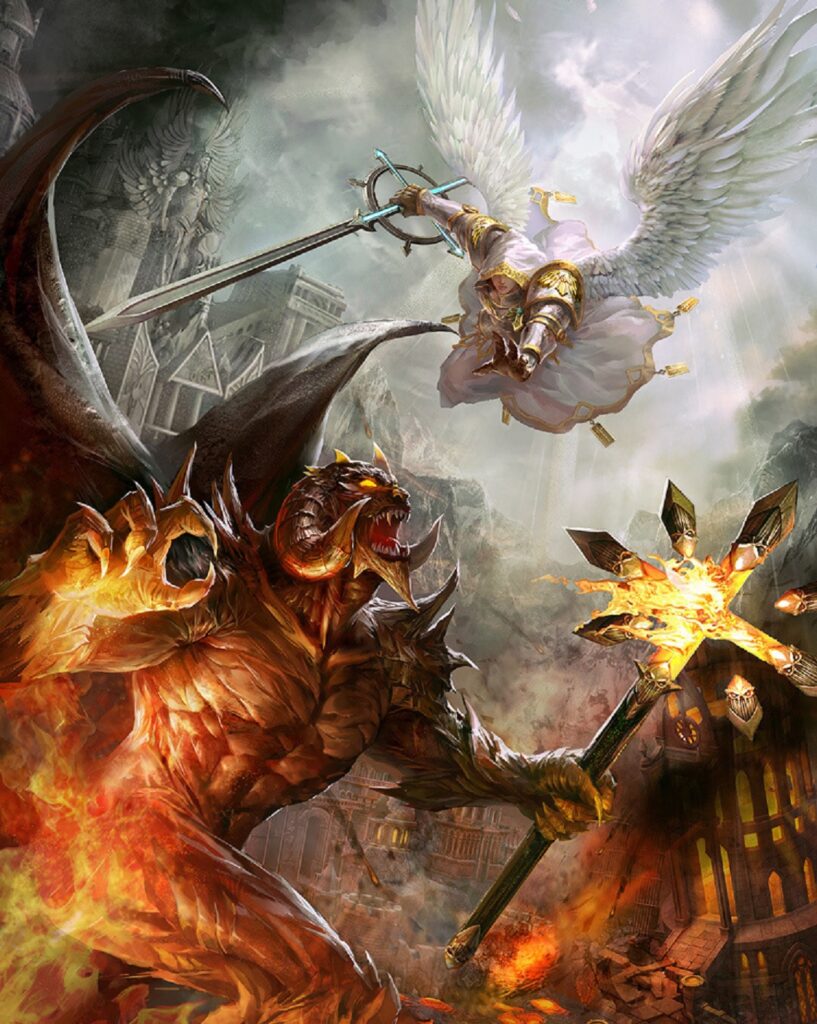
13. Okay, before we get out of here, give us some of your best GMing pearls of wisdom.
Don’t be afraid to feature a few challenges where it is uncertain or even unlikely the pcs can win outright. Have an out if/when they lose, that leads to more interesting possibilities rather than simply a TPK. Epic foes filled with hubris typically want more from pcs than merely their deaths. Such as their services, use as bargaining chips, information, entertainment, conversion to the cause, experimentation, torture, or simply groveling submission. All of which provide ample scope for a dramatic comeback. Players (and GMs!) enjoy nothing more than hard-won triumph snatched from the jaws of defeat.
Victor
“Age just a number, one and one and one. We stronger than number. Next year I’ll be younger”
Li Na
Thank you to the community for making this campaign of the month possible! That’s all for now, join us on our next adventure October 1st, and don’t forget to nominate your favorite campaigns for our next Campaign of the Month!
Creator Spotlight | An Interview with Brenda Cass of Skirmisher Publishing
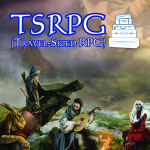
In a world where gamers are always on the go, TSRPG (Travel-Sized RPG) is the perfect game for those who want to enjoy a roleplaying experience without having to lug around a heavy rulebook or dice. Created by Brenda Cass of Skirmisher Publishing, TSRPG is a lightweight game that can be played anywhere, with just a few simple rules.
In this blog post, we interview Brenda Cass to learn more about TSRPG and her inspiration for creating it.
What inspired you to create TSRPG?
The very first draft of TSRPG was written, I think fittingly, on a hotel notepad while I was on vacation with some gamer friends. We ended up with plenty of downtime between activities that we’d normally occupy with gaming but, not having brought any of our usual tabletop stuff (dice, rules, characters, etc), that seemed unavailable to us. At the time I was participating in somewhat regular game-design challenges on d-Infinity.net, so I told my friends I’d design a game that could be played without any of that stuff. It began as a thought experiment and a fun little challenge but ended up working super well in play.
What are the key features of TSRPG that make it a travel-sized RPG?
The game’s original design constraints were that all the rules had to easily fit in your head, there couldn’t be any book keeping, and it couldn’t require any physical randomizers like dice, etc. As a consequence of those constraints TSRPG has simple mechanics that are solely concerned with creating and moving along a shared narrative. Character sheets, such that even they need to exist at all in TSRPG, fit onto a cocktail napkin, hotel notepad, or whatever small piece of paper is at hand. Randomizing outcomes involves guessing numbers, and most importantly the Storyteller has no stat blocks, hit points, ability points, or what have you to keep track of; their only job is facilitating the narrative and helping make sure everyone’s having a good time.
How does TSRPG differ from other tabletop RPGs?
TSRPG differs from other tabletop RPGs in a few ways. It is a high-trust, rules-light system, which makes it feel very different from a lot of the crunchy RPGs out there. It’s diceless, which is definitely a less common feature (don’t worry dice fans, there are optional rules for using them). TSRPG puts a lot of emphasis on crafting a shared narrative with other players in the pursuit of overcoming the story’s challenges as a party, which is a bit different from the mode many folks are used to that involves selecting one of their character’s abilities when their turn comes around in the initiative order.
What are some of the challenges of designing a game that can be played anywhere?
I have to assume that people playing TSRPG are going to be just as resource constrained as I was when I wrote the draft and played it for the first time. For a lot of designers the reflex with RPG design is to have a kind of “more is more” sort of mindset, but for a game like this any mechanic we add potentially puts it over the edge into something that can’t be played on the go. I’ve encouraged folks in the Skirmisher Game Development Group to go play TSRPG with family, friends, or strangers while they’re out traveling. This informed a lot of design decisions that we never had to consider before, PDFs of scenarios are probably being viewed on a cell phone rather than a laptop, new rules need to be highly modular so that they can be selectively added or ignored depending on how many rules folks are up for keeping in their heads, scenarios are more likely to be interrupted so encounters need to be easy to pick up and put down. We find ourselves having to adjust and adapt a lot of what we’ve been doing because TSRPG is so different from anything we’ve done before.
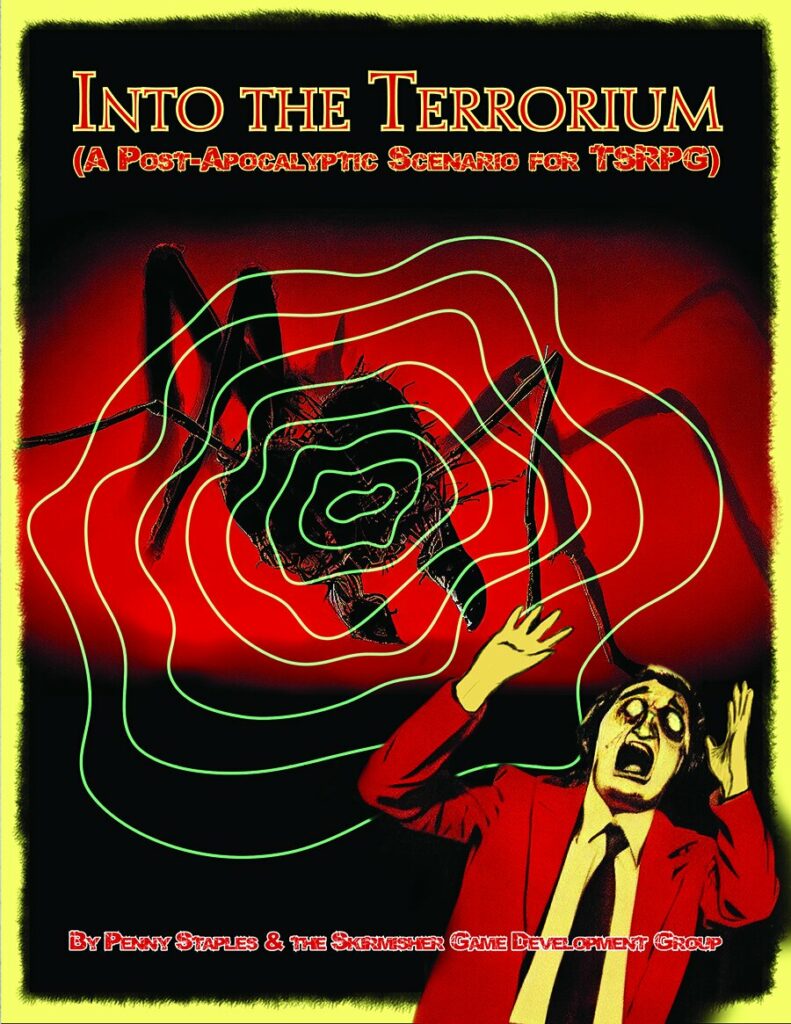
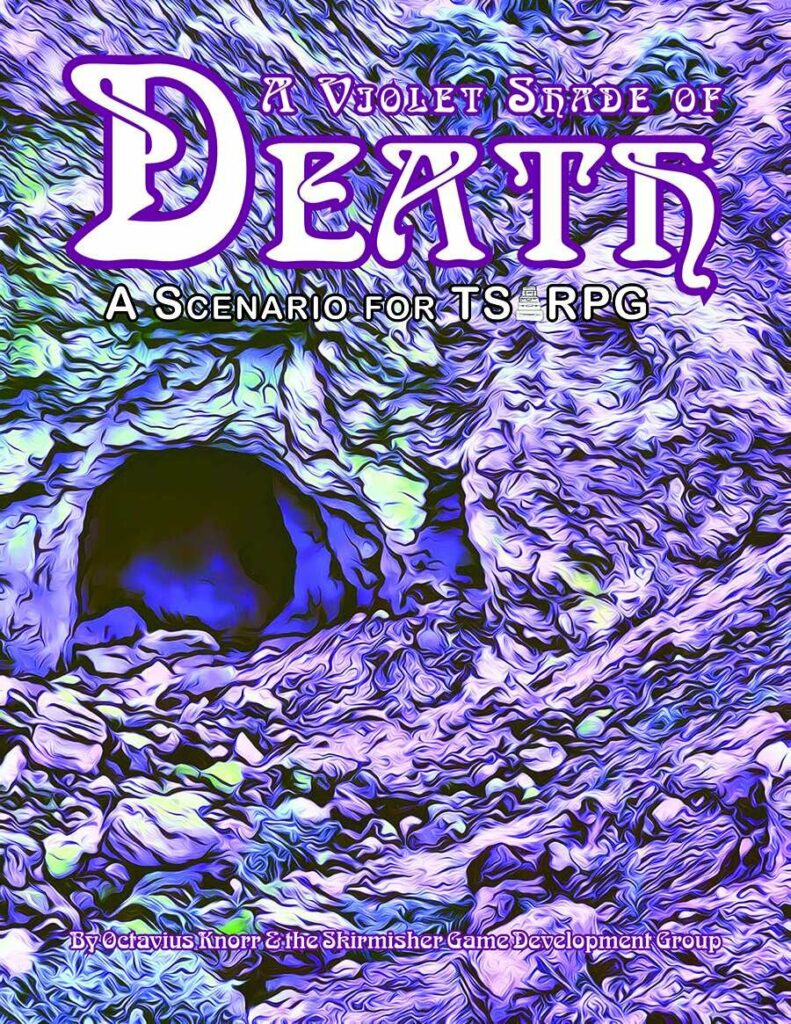

How have you seen TSRPG be used in different settings?
The nice thing about TSRPG being a rules-light system is that you don’t run into any mechanical conflicts with different settings. I’ve seen it used for post-apocalyptic, fantasy, sci-fi, modern day, fairytale, horror, you name it, and there’s already scenarios published for most of those genres.
What are your plans for the future of TSRPG?
The big plan right now is a self-standing game, with its own unique setting, that uses an adapted version of TSRPG that we’re calling “Aesopia”. Aesopia will feature animal people and lean toward humor, quirkiness, and absurdism; it’s the sort of game we wouldn’t want to pair with a more mechanics heavy system. It will have everything folks need to run their own scenarios in that setting and also several supporting scenarios written by us. Skirmisher also recently published a kind of “conversion kit” for playing old school adventure modules using TSRPG called “OS-TSRPG”. It makes it so you can bring your favorite module along with you in a suitcase or backpack and play it on the go with little to no prep. I’m excited to see similar tools for scenarios designed for other systems.
What advice would you give to someone who is interested in trying TSRPG?
Watch one of the samples of play on Youtube, then pick out one of the pre-written scenarios that sounds the most fun to you and give it a try. They’re cheap, they all have a copy of the core rules in them, and any scenario specific mechanics are called out inline. The core rules all fit on one page so learning them isn’t a big time commitment. I’d also say that because TSRPG is a high-trust game, don’t play with jerks because they can really ruin the experience, but I’d also give that advice for playing any other game.
What are some of the challenges of running TSRPG for a group of players who are not familiar with tabletop RPGs?
Fortunately TSRPG is very accessible to folks that are new to tabletop RPGs, and I’ve run many sessions where you’d never know the people at the table had never played an RPG before. The advice I give to new players is to think of their favorite media, books, tv, movies, set in that genre for inspiration on what characters like theirs might do to overcome challenges in the story.
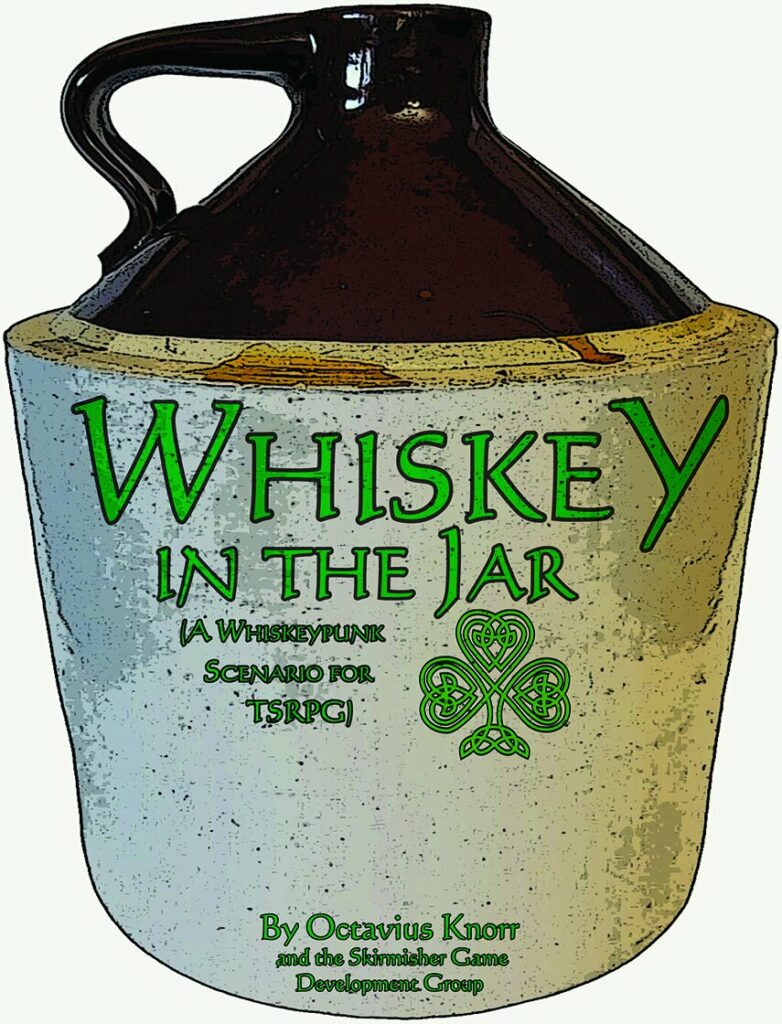
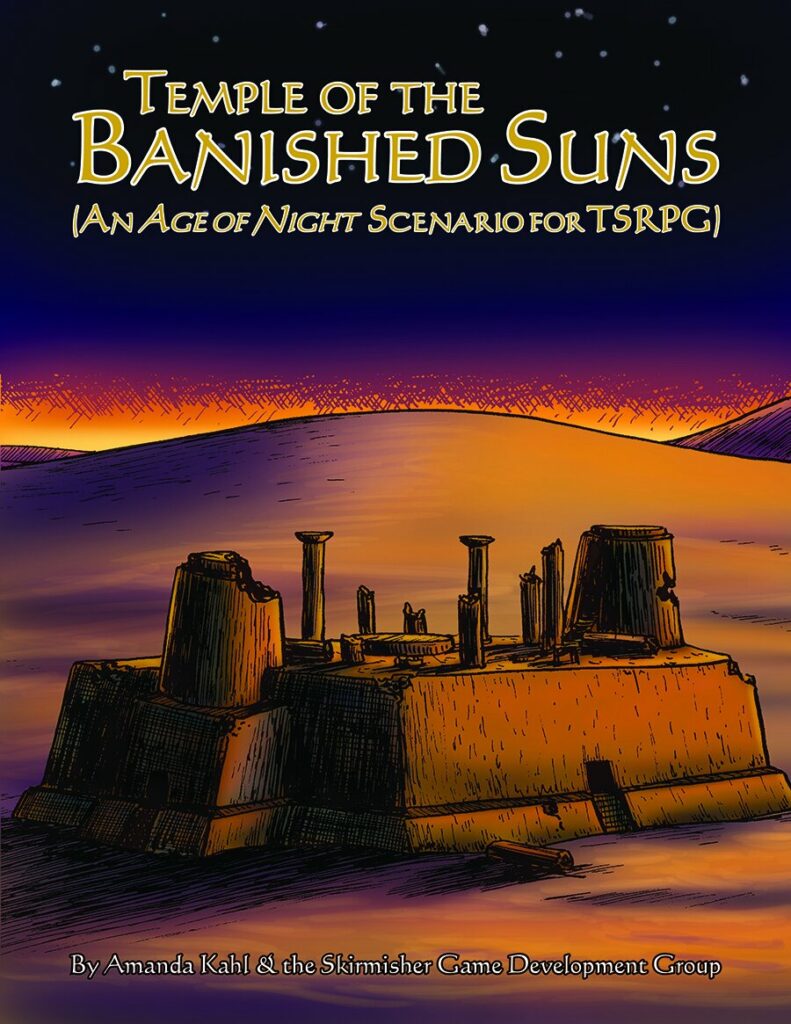
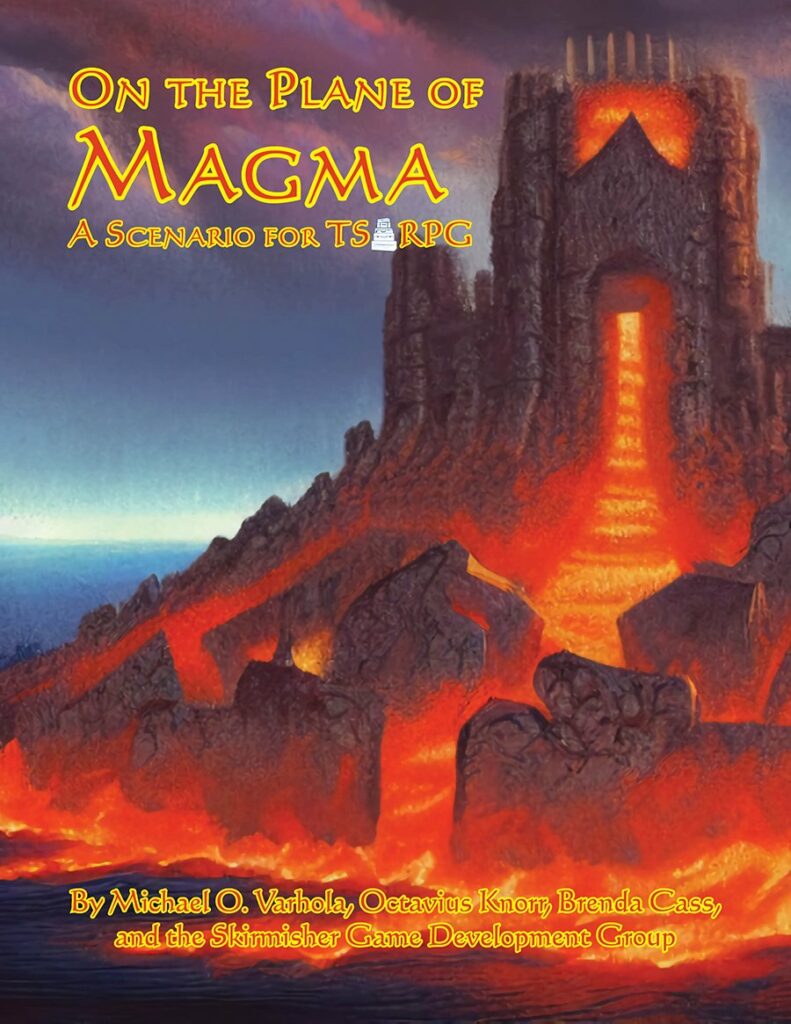
How do you balance the need for simplicity with the need for depth in TSRPG?
TSRPG offers a modular set of optional rules that can be used to add mechanical depth to the game. Optional rules don’t rely on each other, so that leaves players free to cherry pick specifically the ones that are relevant or fun for their scenario without having to worry about breaking the game. A lot of folks will miss the tactical depth of a more rules heavy game, and that’s okay, TSRPG wasn’t designed to scratch that itch. I think that for a lot of people, while TSRPG wouldn’t be their primary system (though I do know several folks in Germany that play TSRPG exclusively now), it could be the second system they learn and turn to because of the flexibility it offers.
What are some of your favorite scenarios for TSRPG?
“A Midsummer Night’s Scheme” because playing a Shakespearean fairy is a hysterically fun time, “Temple of the Banished Suns” because we got to finally do a crossover with fantasy artist and friend Amanda Kahl’s “Age of Night” comic series (and now she can’t claim she isn’t a game designer anymore).
What are some of the things you have learned from the feedback that you have received from players of TSRPG?
TSRPG almost wasn’t published, I didn’t think folks would be very interested in the quirky little game I wrote on a trip many years ago, but was I ever wrong. Folks have hacked TSRPG to run it GM-less, sent in translations of the game and its scenarios for three different languages, used it in classrooms to help teach English, and so many more things that I never expected. Players have definitely shown me how vast and creative the tabletop RPG community is.
What’s the most creative thing you’ve seen a player or GM do with TSRPG?
This expands a bit on one of my answers to the last question. The most amazing thing I’ve seen done with TSRPG is using it to teach English to kids affected by the war in Ukraine. The same group of volunteers has also translated it into Ukrainian, and Skirmisher has partnered with them to distribute copies of the rules for free to Ukrainian people that are interested in them.
You can find Brenda on Twitter. Skirmisher Publishing is a small press publisher of tabletop role-playing games. They are known for their innovative and creative games, such as the award-winning TSRPG. Skirmisher Publishing is committed to providing high-quality games that are both affordable and accessible to gamers of all levels. They also offer a variety of free resources for gamers, such as character generators, rulebook errata, and adventure modules.
Obsidian Portal Campaign of the Month July 2023: Esomor Prime
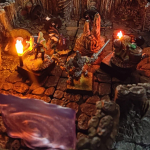
Enter the intriguing realms of Esomor Prime, a 5th edition D&D campaign set in the homebrew world of Sam. Here we find a world dominated by 13 powerful noble houses, who rule over dozens of factions and hundreds of lesser houses. In this world Sam runs SIX separate groups, totalling TWENTY FIVE players, all in different regions of the world, for now…

Tell us a little about the people behind the logs? What’s your group like, how did you all start playing together, and what drew you to your current system?
The groups are all friends of mine through various corners of my life, and I use one Obsidian Portal site for all of them. My original group has been playing D&D since 1995 and we were brought together back then by our mutual friend and first DM, Roy. I eventually took over as the full time DM of that group and have never relinquished the reins. The other groups started trickling in over the last 5 years, and include a “brewers group” a “work group”, a “circle of friends new to the game group”, and “friends from college group”, and an “online only group” for those out of town.
How often do you play and how do you generally do so?
The online group is constantly going in a “play by post” format. For live sessions I usually DM every two weeks but with so many groups, they only get to play every two months. Sometimes I am booked solid 4 months out!
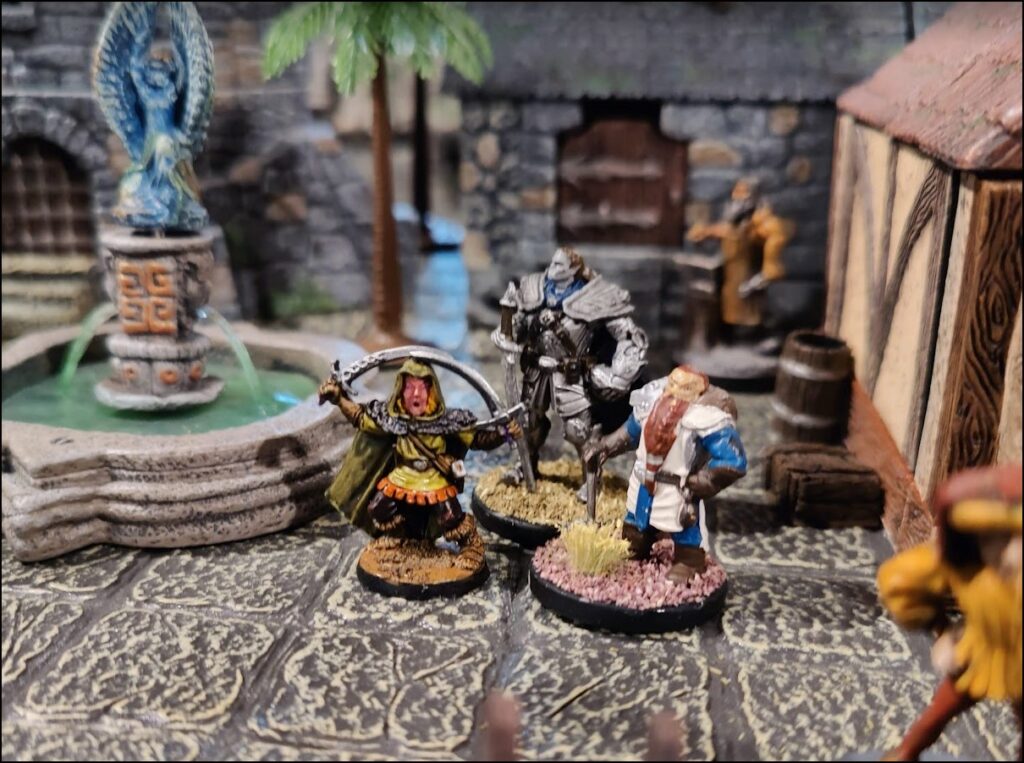
What’s the primary inspiration for your game? What themes do you and your players like to explore or situations you dream would come about?
For this current campaign I am running, I wanted a Game of Thrones like setting with lots of political intrigue with strong noble houses and powerful factions and huge world-changing story arcs. My “oldest” group is 8th level and my newest is 2nd, so some of them are just now starting to see the beginning of the “big picture”. I do have a dream of assembling an All-Star game with one player from each group and them all coming together to form an epic, end-of-campaign, world saving task.
You have a mighty list of Player Characters, what complications does that add for you and your players?
Obsidian Portal makes it so easy for all of my players to sort by their own campaign, but there is so much crossover information at their fingertips that each group can indirectly learn from each other group. Not sure who this NPC was? Look them up on the website! Maybe another group has run into them before and you can learn even more about them!
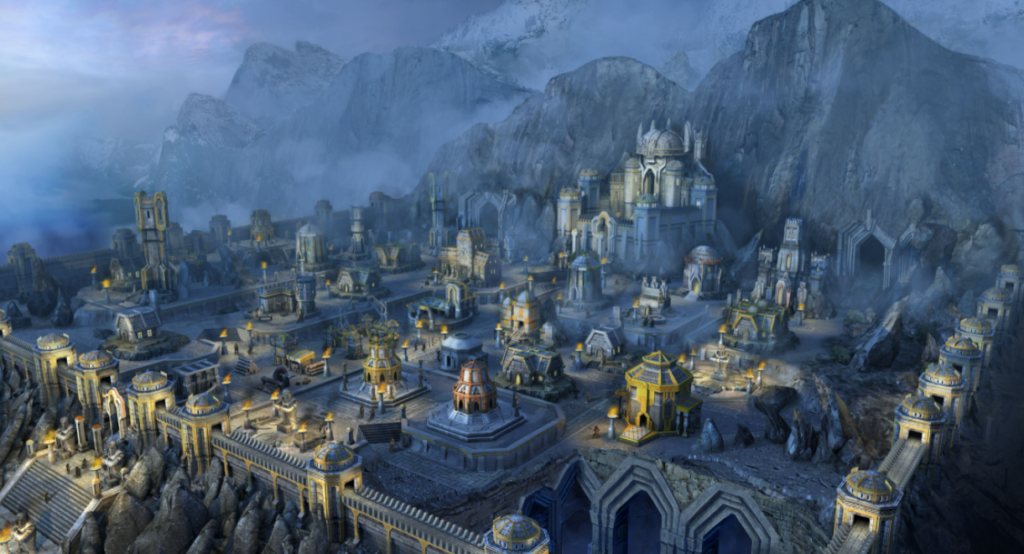
How long did you spend developing the style of your site, and did you have any help?
This huge campaign has been a dream of mine for a long time and I have been tinkering with the idea for years. For the longest time I would just make notes on what style of campaign I wanted to run and eventually this homebrew world started to take shape. As a previous campaign world was coming to an end, I launched this one to transition into. Lately, ChatGPT has really helped streamline the process for some of the minor details.
I love your inclusion of art/memes in the adventure logs, do you create them by yourself, or do share that responsibility?
The Bing Image creator through DALL-E has been a huge help, such a time saver!
As you’ve been on Obsidian Portal for a while, what is your favorite feature for helping to manage your campaign?
Obsidian Portal is so easy to use! It looks great, links are easy to create, and it is a breeze to import images. Plus having one single wiki page for the “Order of Bones” faction that is seen across all groups is a HUGE time saver.

Back to your game, what would you say has been the best moment your table has had thus far in your campaign?
Each group has had some amazing moments, but one of my favorites was my “Bronzewood Valley” group following up on a random minor encounter I left for them where they found a broken compass on a trail. They thoroughly investigated who left it, where it was purchased, and was able to track and save the lost explorer. Through a long series of other events, this led them to working with that adventurer to establish their very own town in the mountains, all from this random broken compass!
Let’s round this out with one of our favorite questions for our featured GMs! If you had a secret sauce for running a great game, what would be the most important ingredients?
Have fun! Sometimes I worry if I have enough prepared for a session, or do I have enough handouts, will the battles be challenging, but once the session gets rolling just go with it and remember why everyone has taken time out of their day to play, so have fun!
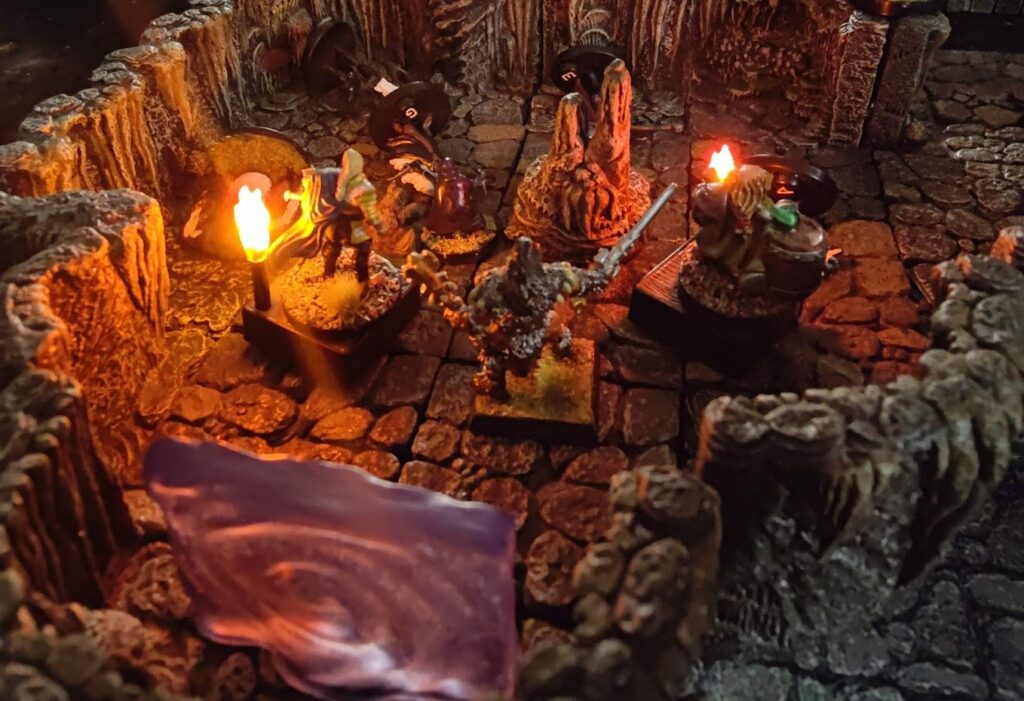
That’s all for this month folks! Don’t forget to head on over the the OP forums to nominate your favorite campaigns for our next Campaign of the Month!
Creator Spotlight | An Interview with Author Lou Anders
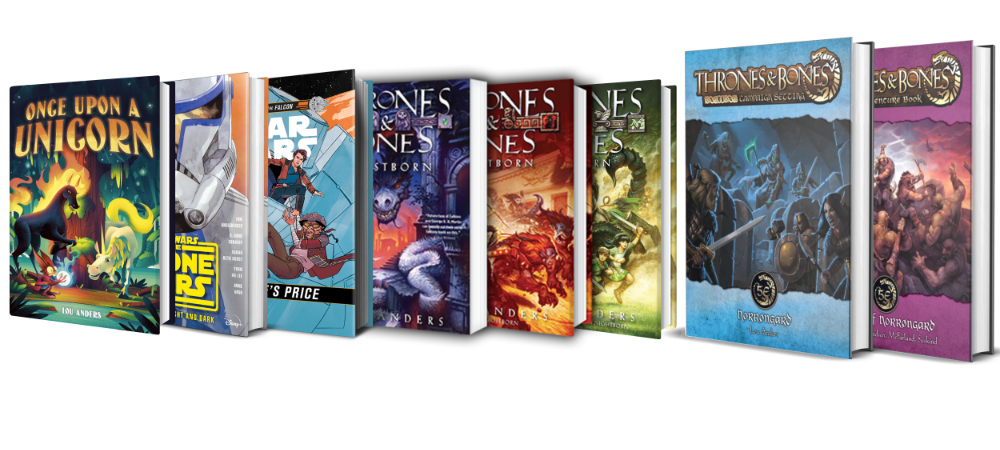
This week, we’re talking to Lou Anders of the acclaimed Thrones & Bones series!
Fans of all things Viking should be particularly excited, because Anders’ world is an ode to the rich history of the Norse legends and traditions, with some personal tweaks of his own that make for a truly fantastical setting. Based on the titular book series set in the lands of Norrøngard, Anders has brought his world into the world of tabletop gaming (currently compatible with D&D 5E, but read on for a sneak peek on what else to expect), allowing fans of the books an immersive experience of gameplay, and a whole new audience chances to tell their own stories in this richly-detailed world.
He has a whole line of materials that flesh out the world with playable classes, monsters, and adventures all stemming from Norrøngard.
He offers us insight into how he created this series, what it was like to bring that world to a different format, and what else we can look forward to from him in the future!
What initially drew you to the Norse mythos as an inspiration for your world, and what was it like to adapt your research into the world of Norrøngard?
When you say “initially” we have to go back to 2010, because the world was born first in the pages of my children’s novel before it was an RPG. In 2010, I was an editor in science fiction & fantasy publishing, running the Pyr books line, but noted anthologist Jonathan Strahan and I teamed up to co-edit a sword & sorcery anthology for Simon & Schuster called Swords & Dark Magic. It featured new and old authors of gritty fantasy writing S&S, including Michael Moorcock, Glen Cook, Steven Erikson, Garth Nix, C.J. Cherryh, Tanith Lee, others. During all this, I got inspired and tried to write my own short story (not for the anthology) about a “female Conan” who was half human, half frost giant. The story was, frankly, terrible. Really bad. But the character wouldn’t leave me. She stuck around, and then one day I realized that what was interesting about her was not her as an adult, but her childhood, what it was like to grow up half human in a village of giants. And that became my novel Frostborn. But I’m not a fan of monocultures. I never wanted to write “Viking Planet,” so from the start it was important to me that Norrøngard was just one country on the edge of a vast continent. Before I even started plotting, I had worked out their history across thousands of years and who they had interacted with in that time. I think I had twenty or so countries, many with their own gods and naming conventions and detailed history, before I ever wrote a line of prose. But as I started working out Norrøngard specifically, I looked at both history and mythology to build their culture. A lot of it was building out a backstory for a country the same way you’d build a backstory for a character. Figuring out where they came from, what they’d been through to get where they were, and who they were today. Also, it’s not 1:1 Norse myth. The Norrønir have their own creation myth, a different if analogous set of gods, a slightly different afterlife, and are at least a century passed their raiding period and living under an era with a Norrøngeld with their nearest neighbors (a “tax not to raid” that the king collects, inspired by the Danegeld of our world.)
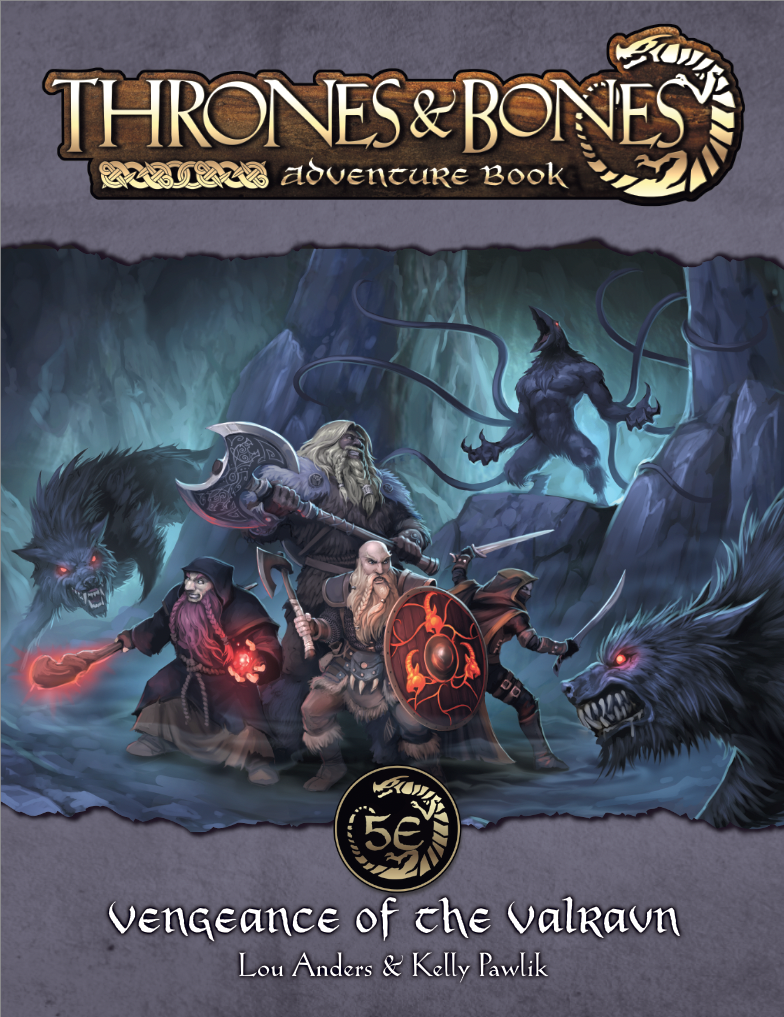
What was the process like to shift this world from a set story into a world that people can play in?
A lot of hard work! In Frostborn, we start in a human farm and a small giant village, visit only one city briefly, and spend most of the book in the wilderness. For Thrones & Bones: Norrøngard, I not only detailed the city of Bense but nine other Norrønian cities, with maps, details of their histories, key locations, their jarl, etc… Just the lore itself went through a major expansion, which doesn’t even begin to talk about creating the mechanics of ancestries and subclasses and rune magic and a bestiary, and all of that! It was a massive project that took over a year of full time work.
What was it like having multiple groups playtesting these supplements, and were there any surprising insights you can share about the playtesting process in general?
The best advice I can give about play testing is sign up way more groups than you need because half of them will never get to it and the other half will decide to veer off the rails and go in a direction that doesn’t help you much!
Your work clearly respects the Norse tradition and practices and having an actual Norse language consultant proves your dedication to authenticity. What was it like to work with an actual translator, and how much of their input helped to mold the world outside of just spelling suggestions?
Trond-Atle Farestveit is wonderful. He didn’t just translate things for me from English to ancient Norse. He’d work with me to get at the heart of what I was trying to do and help me pull from the culture to make sure it made sense in those terms.
-You’ve got a seriously robust bestiary, and aside from the Linnorms, my personal favorite is a tie between the Butter Cat and the Iron Dwarf. What was it like to playtest all of these creatures?
Playing with something you created yourself is a blast. Hearing from other folks playing and enjoying it is even more so. I’m really proud of a lot of those creatures and how their traits and actions keeps to the heart of how they are portrayed in myth and folklore.
Will fans of the books be able to see any familiar faces in these guides?
I deliberately kept the principal characters out of the game. The timeline in the RPG picks up one year after events in the books, and while I haven’t settled exactly where Thianna Frostborn goes after her journey to Thica, I know for a fact she’s not in Norrøngard right now. Neither is the dark elf Desstra. Karn *may* be back on his farm, or he may have gotten sidetracked heading home. But I didn’t want to “stat them out” and make them NPCs. So Stolki’s Mead Hall is in Bense, and Helltoppr is still in his barrow, but other than that, the RPG is populated with new characters. That being said, there are illustrations of them in the books – so you can technically see them.
Personally, I’m a sucker for any type of in-world games and activities that players can play as their characters. What was it like to make Thrones & Bones, Knattleikr, and Flyting as playable in the game?
Thrones & Bones came first. It dates back to when I was writing the first novel, Frostborn. The Norse played a game called hnefatafl before they discovered chess. In the novel, my female protagonist, Thianna, is a skilled knattleikr player. When I realized I needed a male co-protagonist, I wanted to give him something to be good at and it couldn’t be sports. So Karn Korlundsson because a hnefatafl player. I realized early on that I needed to know the rules—and there aren’t any. Not that we know. The Norse never wrote them down. There are quite a few reconstructions based on what we do know or can infer, and the various games in the tafl family can differ from each other a lot, right down to how many squares on the board and whether dice are involved. The more I looked into it, the more it made sense to create my own original game in the taft family. I built a board. Then I cherry picked rules from several of the best hnefatafl reconstructions, mixed in some of my own rules, and then play tested. I was fortunate in that my two oldest nephews were both chess champions in our state at the time, so I took them to Starbucks and set the game down between them, and they played each other for hours. I actually had to pry it out of their hands! That’s when I knew I had something. When it came to translating the novel into the game, including the game-within-a-game was a no brainer. Knattleikr came next. The rules for the sport are the only bit of text in the core book I didn’t write entirely by myself. I’d written rules, but then I hired designer Brian Suskind to write an adventure for the companion book, Sagas of Norrøngard. Brian didn’t like my rules and rewrote them. He fixed some things, but then he had me thinking about it, so I took what he did and made some changes, and we passed it back and forth until we had something we both liked. Flyting was a late addition, but I realized I needed all three of these Norse pastimes in the setting guide. And then it ended up coming into play in the second starter adventure.

You offer a lot of unique ancestries and class options for players in the Player’s Guide, what guided you through that process of progression, and do you have a personal favorite character build to make?
With all the designs, I wanted to go to the actual Scandinavian myth and folklore, especially with monsters and subclasses. My favorite build, and one that’s proving popular with players, is the huldra völva. Originally, the huldra were just monsters. But they are the “hidden folk,” and they interact so often with humans, I realized there were probably a lot of huldra living among the Norrønir in secret, and if they are there, then you should be able to play as one! The völva was tricky. But mostly because I put myself into a corner and then had to see my way out. My neighboring country of Araland is a faux-Celtic setting, so in my mind Araland is where you get druids. I was thinking of the völva as another spellcasting class—the name translates as “carrier of the magic staff” so I was trying to make them wizards—and it was just so much trying to force them into a box they didn’t want to go in. Finally, I took a step back and looked at what the völva actually were – wandering seeresses who could shapeshift, see the future, and control the weather, and I went, “Doh! That’s a druid.”
To take a quote from the introduction to your setting guide, “A map is nothing without a viewer.”
What has your experience been like working with artists to bring the world of Qualth to life with visuals with world and battle maps?
Working with artists is tremendous. I was an art director in SF&F publishing for 10 years, so I come to game design with experience working alongside illustrators and a deep appreciate for their talent. I’ve always been a visual thinker, so when I was writing novels, I was commissioning artwork and maps as I wrote—not for publication (the art in the book falls under the purview of the publisher’s art director), but just to help me visualize the world as its being created. From the start, I commissioned a lot of art from Andrew Bosley and maps from Rob Lazzaretti, while Justin Gerard did a lot of work for the novels that he kindly let me reuse for the game. When it came time for battle maps, there was no question it would be Heroic Maps. They are hands down my favorite cartographers in that space. I’m fortunate to have several great artists for the game I’ve worked with more than once—folks like Ksenia Kozhevnikova, William O’Brien, Craig J. Spearing, and Bryan Syme. One of the fun things too has been to work with William on “aging up” my three protagonists Thianna, Karn, and Desstra (she joins in book two). They are around 13 years old in the novels, but the game isn’t targeted at the same age group as the books, so I wanted to include “what they look like now” illustrations of older versions of my heroes. Then Effincool Minis actually made a 3D printable sculpt of the older Thianna, which thrills me beyond words.
One of my favorite items you’ve made is the Brúsi Shield (found in Sagas of Norrongard), a special shield that can summon a spectral goat’s head to make ramming attacks a few times per day. What has it been like to make unique weapons and artifacts, and what was your process to playtest them?
So, the Brúsi Shield is a bit of an in-joke. “Brúsi” is the Old Norse word for “he-goat,” and the earliest version of the tale “The Three Billy Goats Gruff” we have comes from Scandinavia, De tre bukkene Bruse. It’s a small spoiler to say so, but the shield is found in the adventure “From Svartálfaheim, with Love,” right before you encounter a troll on a bridge… As to playtesting, that’s the best part isn’t it?
Your game materials cover far more of the world than Karn and Thianna are able to visit and see, was there any area in particular you were personally excited about getting to explore in more depth?
All of it. I really worked hard to make each of the new cities we explore its own unique place. So Herkeby is laid out like a giant Trelleborg (ring fortress), Sindholm sits above an enormous cavern in which longships dock, Umsborg is bisected by a lava flow, and so on. With the recent Kickstarter, Vengeance of the Valravn, which takes place in Sindholm, we have adventures that take you everywhere but Oslendhom and Umsborg (though the lore from these two locations is, of course, in the core book). There are still places I want to explore one day though!
What work might fans look forward to in the future from you?
There is so much in the pipeline, and the recent OGL kerfluffle has only upped the number of projects. With the usual caveats about the “best laid plans,” here’s a run-down. Vengeance of the Valravn is in copyedits now. I hope to have it out in March. Then I’ll immediately Kickstart the already-written Tales from Stolki’s Hall. After being out of the editor’s chair for seven years, I’ve put that hat back on and reached out to some of the best fiction writers I used to work with. Stolki’s Hall is an anthology of adult fantasy stories, written not by me, but by ten other authors, set in the land of Norrøngard. It’s fantastic, and I can’t wait for people to read it. I’ve also just signed contracts for two conversions of the campaign guide, Thrones & Bones: Norrøngard, to two other systems. I’ll probably turn to Kickstarter again for those, not for the budget (it’s a done deal with budget already set aside), but for the visibility. Beyond that I’ve got an idea for something “mythos related” in the world of Qualth that I want to do. I’ve already outlined and started commissioning and receiving art for the next Big Project, which is the first adventure set outside of Norrøngard. It starts off in Nelenia, a country that is in the middle of the continent of Katernia, about a thousand miles from Norrøngard, and modeled loosely on Switzerland. I’m really excited about this adventure, which I hope to announce by year’s end, but given the aforementioned list of projects, it might slide into 2024. When it does debut, it will most likely be multisystem, so they’ll be 5e, Pathfinder 2, and other versions. I think it only makes sense going forward not to put all the eggs in one basket, which means my tiny indie, Lazy Wolf Studios, is set to grow whether it wants to or not!
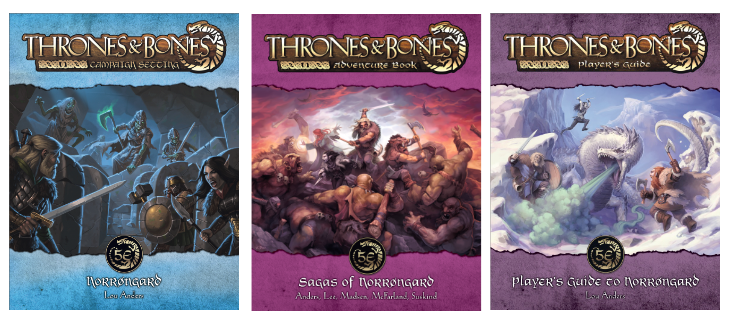
Lou Anders is the author of the novel Once Upon a Unicorn, as well as the Thrones & Bones trilogy of fantasy adventure novels (Frostborn, Nightborn, and Skyborn), and the novel Star Wars: Pirate’s Price. He has also done role playing game design for Kobold Press, River Horse, and 3D Printed Tabletop. In 2016, he was named a Thurber House Writer-in-Residence and spent a month in Columbus, Ohio teaching, writing, and living in a haunted house. When not writing, he enjoys playing role playing games, 3D printing, and watching movies. He lives with his wife, children, and two golden doodles in Birmingham, Alabama. You can visit Anders online at louanders.com, on Facebook, Instagram, and on Twitter at @Louanders.
First Impressions Video: “ATMA: The Roleplaying Card Game”
Check out an overview for this card game ttrpg combo from Meromorph Games. It’s a no-prep collaborative story-building game that takes one GM and up to four Players through a futuristic Earth in two hours. You can also try it out online!


